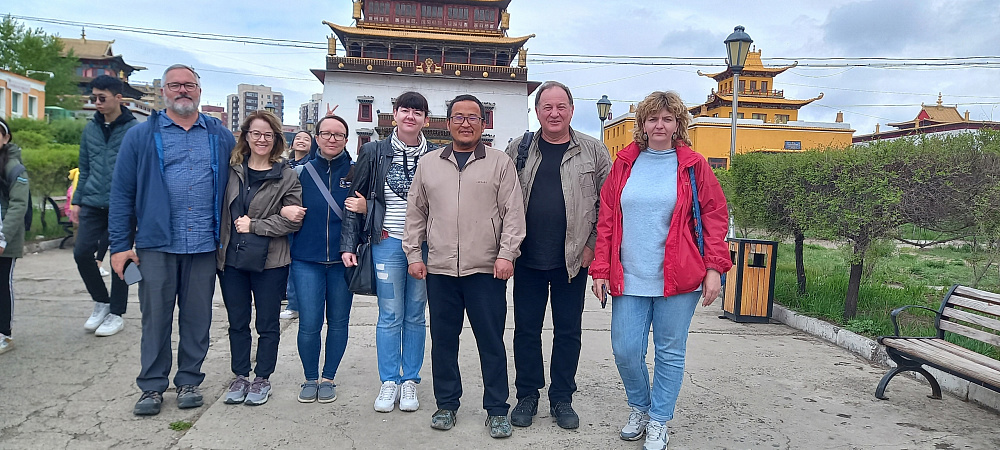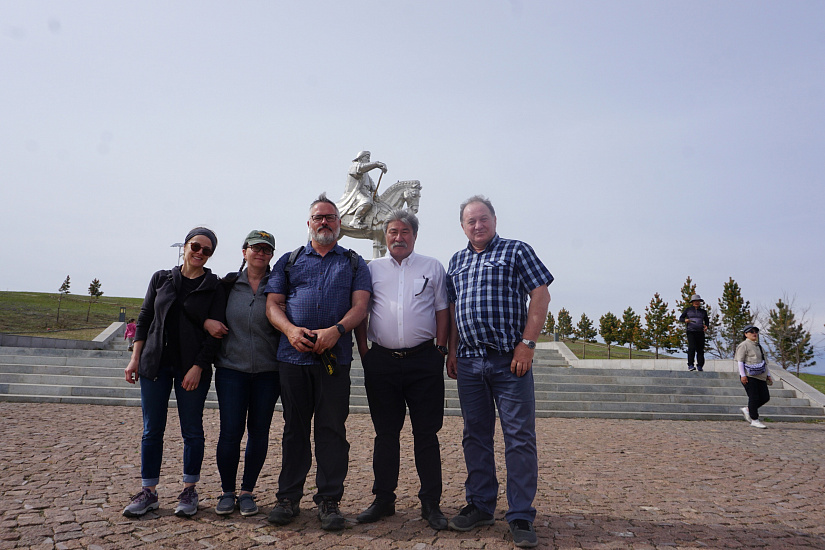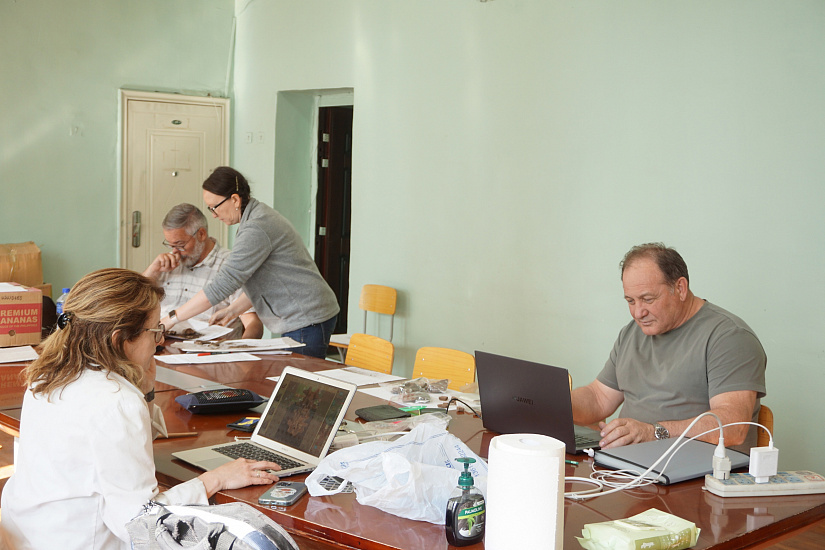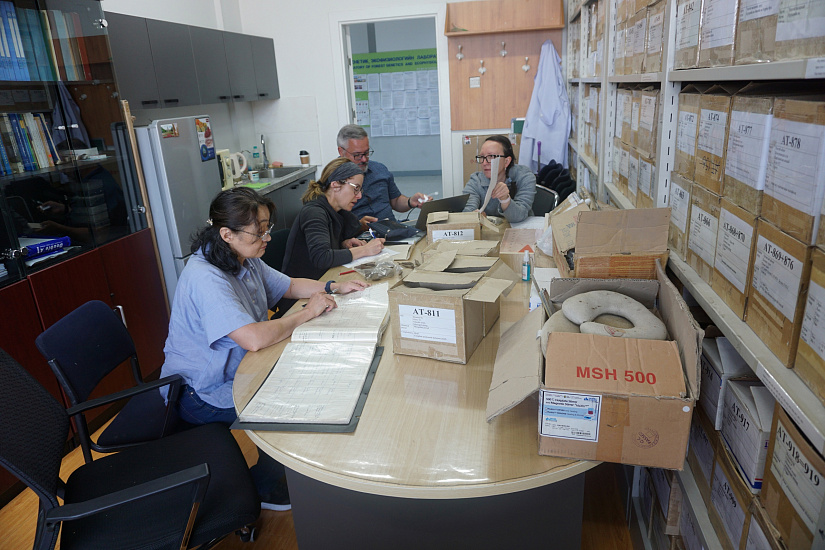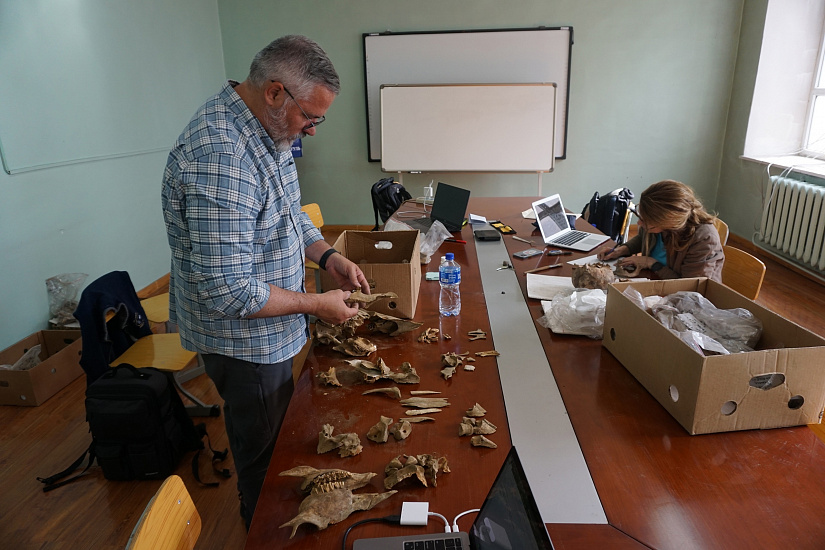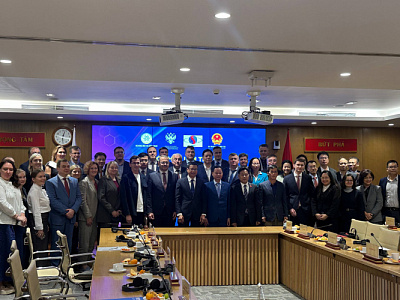Anthropological and zoological collections from Mongolia are being explored by INRTU archaeologists and Canadian scientists
INRTU archaeologist Artur Kharinskiy, together with colleagues from Canada, is exploring anthropological and zoological collections obtained during excavations in Mongolia. The first results allowed scientists to learn about the peculiarities of the way of life and burial traditions of the population of the Khubsugul region in ancient time.
The processing of historical materials was organized at the site of the National University of Mongolia. The research team included the head of the laboratory of archeology, paleoecology and life systems of the peoples of North Asia Artur Kharinskii and Canadian scientists Robert Lozey, Tatiana Nomokonova and Angela Livers.
In the course of the work Artur Kharinskii looked through the artifacts. Tatyana Nomokonova and Robert Lozey examined the remains of animals. Angela Livers was in charge of processing the anthropological materials.
According to Artur Kharinskii, he is connected with his foreign colleagues by joint scientific projects:

“We were engaged in research of the bone remains of domestic animals and early pastoralists of the Baikal region. At present, cooperation has been resumed on the study of anthropological and zoological remains found even before the pandemic on the northern shore of Lake Khubsugul.”
Finds from the shores of Lake Khuvsgul belong to different time periods. This allows us to consider anthropological and zoological remains in a certain dynamics. The earliest of them date from the middle of the 1st millennium BC, and the latest from the 15th-16th centuries.
“With colleagues from Canada we carefully studied the skulls of cows found in the burial place of the middle of the 1st millennium BC, noted the absence of horns. This phenomenon is rare. The features of the skulls led us to the idea that, perhaps, we have before us the remains of hornless yaks. These animals were first tamed in Tibet. However, the date of appearance of yaks on the coasts of Khuvsgul is still a mystery that we are trying to solve,” says Artur Kharinskii.Most of the burials excavated by Irkutsk archaeologists on the banks of the Khubsugul date back to the period of the Mongol Empire (13th-14th centuries). In the territories conquered by the Mongols, general cultural trends developed, which also manifested themselves in the funeral rite. Despite this, certain areas of the empire sought to preserve their identity.
According to Arthur Kharinskii, such features include the placement in the grave along with the deceased parts of the carcass of a ram:
Laboratory specialists will accurately determine the age of the remains, the content of nitrogen and carbon in the bones, and will learn more about the diet of people and animals. The bones can reveal the features of the formation of various groups of people and animals, track migration.
Canadian scientists will also compare the DNA of horses from Khubsugul, Siberia and Central Mongolia. This will complement the ideas about the formation of populations of domestic animals.
Artur Kharinskii also added that from July 27 to August 9 he will go on an archaeological expedition through the territory of Western Mongolia. The project will be headed by historian, archaeologist, academician of the Russian Academy of Sciences Nikolai Kradin. The expedition will follow the route of the famous traveler, explorer of Mongolia, Tibet and Xinjiang Pyotr Kozlov.
Detailed information about the upcoming expedition can be found at a press conference to be held on July 26 in the exposition department of the Irkutsk Regional Museum of Local Lore "Window to Asia".

